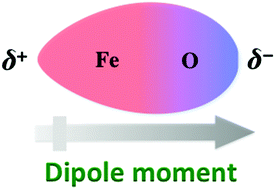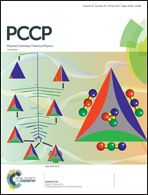Can Kohn–Sham density functional theory predict accurate charge distributions for both single-reference and multi-reference molecules?†
Abstract
Dipole moments are the first moment of electron density and are fundamental quantities that are often available from experiments. An exchange–correlation functional that leads to an accurate representation of the charge distribution of a molecule should accurately predict the dipole moments of the molecule. It is well known that Kohn–Sham density functional theory (DFT) is more accurate for the energetics of single-reference systems than for the energetics of multi-reference ones, but there has been less study of charge distributions. In this work, we benchmark 48 density functionals chosen with various combinations of ingredients, against accurate experimental data for dipole moments of 78 molecules, in particular 55 single-reference molecules and 23 multi-reference ones. We chose both organic and inorganic molecules, and within the category of inorganic molecules there are both main-group and transition-metal-containing molecules, with some of them being multi-reference. As one would expect, the multi-reference molecules are not as well described by single-reference DFT, and the functionals tested in this work do show larger mean unsigned errors (MUEs) for the 23 multi-reference molecules than the single-reference ones. Five of the 78 molecules have relatively large experimental error bars and were therefore not included in calculating the overall MUEs. For the 73 molecules not excluded, we find that three of the hybrid functionals, B97-1, PBE0, and TPSSh (each with less than or equal to 25% Hartree–Fock (HF) exchange), the range-separated hybrid functional, HSE06 (with HF exchange decreasing from 25% to 0 as interelectronic distance increases), and the hybrid functional, PW6B95 (with 28% HF exchange) are the best performing functionals with each yielding an MUE of 0.18 D. Perhaps the most significant finding of this study is that there exists great similarity among the success rate of various functionals in predicting dipole moments. In particular, of 39 functionals designed as general-purpose functionals and that do not have a global value of 100% HF exchange, the average MUE is 0.23 D, with a standard deviation of only 0.04 D. Among gradient approximations, which are especially interesting because of their speed and portability, the best overall performance is by PBE, HCTH/407, OLYP, OreLYP, and GAM, each with MUE of 0.22 D.



 Please wait while we load your content...
Please wait while we load your content...